The Intel Ivy Bridge (Core i7 3770K) Review
by Anand Lal Shimpi & Ryan Smith on April 23, 2012 12:03 PM EST- Posted in
- CPUs
- Intel
- Ivy Bridge
The Lineup: Quad-Core Only for Now
Very telling of how times have changed is that today's Ivy Bridge launch only comes with a single Extreme Edition processor—the Core i7-3920XM, a mobile part. There are some great enthusiast desktop parts of course, but as with Sandy Bridge the desktop Extreme Edition is reserved for another platform. In this case, we're talking about LGA-2011 which won't launch in an Ivy flavor until the end of this year/early next year at this point.
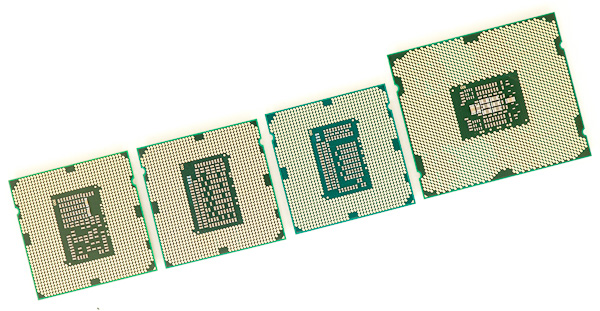
From left to right: Clarkdale, Sandy Bridge, Ivy Bridge, Sandy Bridge E
Contrary to everything I've been saying thus far however is the nature of the launch: only quad-core parts will be available first. The dual-core, and more importantly for Ivy Bridge, the ultra low voltage parts won't come until May/June. That means the bigger notebooks and naturally the performance desktops will arrive first, followed by the ultraportables, Ultrabooks and more affordable desktops. This strategy makes sense as the volumes for expensive quad-core notebooks and performance desktops in general are lower than cheaper dual-core notebooks/desktops. From what I've heard, the move to 22nm has been the most challenging transition Intel's fab teams have ever faced, which obviously constrains initial supplies.
| Intel 2012 CPU Lineup (Standard Power) | |||||||||
| Processor | Core Clock | Cores / Threads | L3 Cache | Max Turbo | Intel HD Graphics | TDP | Price | ||
| Intel Core i7 3960X | 3.3GHz | 6 / 12 | 15MB | 3.9GHz | N/A | 130W | $999 | ||
| Intel Core i7 3930K | 3.2GHz | 6 / 12 | 12MB | 3.8GHz | N/A | 130W | $583 | ||
| Intel Core i7 3820 | 3.6GHz | 4 / 8 | 10MB | 3.9GHz | N/A | 130W | $294 | ||
| Intel Core i7 3770K | 3.5GHz | 4 / 8 | 8MB | 3.9GHz | 4000 | 77W | $313 | ||
| Intel Core i7 3770 | 3.4GHz | 4 / 8 | 8MB | 3.9GHz | 4000 | 77W | $278 | ||
| Intel Core i5 3570K | 3.4GHz | 4 / 4 | 6MB | 3.8GHz | 4000 | 77W | $212 | ||
| Intel Core i5 3550 | 3.3GHz | 4 / 4 | 6MB | 3.7GHz | 2500 | 77W | $194 | ||
| Intel Core i5 3450 | 3.1GHz | 4 / 4 | 6MB | 3.5GHz | 2500 | 77W | $174 | ||
| Intel Core i7 2700K | 3.5GHz | 4 / 8 | 8MB | 3.9GHz | 3000 | 95W | $332 | ||
| Intel Core i5 2550K | 3.4GHz | 4 / 4 | 6MB | 3.8GHz | N/A | 95W | $225 | ||
| Intel Core i5 2500 | 3.3GHz | 4 / 4 | 6MB | 3.7GHz | 2000 | 95W | $205 | ||
| Intel Core i5 2400 | 3.1GHz | 4 / 4 | 6MB | 3.4GHz | 2000 | 95W | $195 | ||
| Intel Core i5 2320 | 3.0GHz | 4 / 4 | 6MB | 3.3GHz | 2000 | 95W | $177 | ||
There are five 77W desktop parts launching today, three 65W parts and one 45W part. The latter four are either T or S SKUs (lower leakage, lower TDP and lower clocked parts), while the first five are traditional, standard power parts. Note that max TDP for Ivy Bridge on the desktop has been reduced from 95W down to 77W thanks to Intel's 22nm process. The power savings do roughly follow that 18W decrease in TDP. Despite the power reduction, you may see 95W labels on boxes and OEMs are still asked to design for 95W as Ivy Bridge platforms can accept both 77W IVB and 95W Sandy Bridge parts.
We've already gone through Ivy's architecture in detail so check out our feature here for more details if you haven't already.
| Intel 2012 Additional CPU Features (Standard Power) | |||||||||
| Processor | GPU Clock (base) | GPU Clock (max) | PCIe 3.0 | Intel SIPP | Intel vPro | Intel VT-d | Intel TXT | ||
| Intel Core i7 3770K | 650MHz | 1150MHz | Yes | No | No | No | No | ||
| Intel Core i7 3770 | 650MHz | 1150MHz | Yes | Yes | Yes | Yes | Yes | ||
| Intel Core i5 3570K | 650MHz | 1150MHz | Yes | No | No | No | No | ||
| Intel Core i5 3550 | 650MHz | 1150MHz | Yes | Yes | Yes | Yes | Yes | ||
| Intel Core i5 3450 | 650MHz | 1100MHz | Yes | Yes | Yes | Yes | Yes | ||
The successful K-series SKUs are front and center in the Ivy lineup. As you'll remember from Sandy Bridge, anything with a K suffix ships fully unlocked. Ivy Bridge K-series SKUs support multipliers of up to 63x, an increase from the 57x maximum on Sandy Bridge. This won't impact most users unless you're doing any exotic cooling however.
If you don't have a K in your product name then your part is either partially or fully locked. Although this doesn't apply to any of the CPUs launching today, Ivy Bridge chips without support for turbo are fully locked and cannot be overclocked.
If your chip does support turbo boost, then you can overclock via increasing turbo ratios by as much as 4 bins above their standard setting. For example, the Core i7 3550 has a max turbo frequency of 3.7GHz with a single core active. Add another four bins (4 x 100MHz) and you get a maximum overclock of 4.1GHz, with one core active. The other turbo ratios can also be increased by up to four bins.
| Sandy Bridge vs. Ivy Bridge Pricing | |||||
| Sandy Bridge | Price | Price | Ivy Bridge | ||
| Core i7 2700K | $332 | $313 | Core i7 3770K | ||
| Core i7 2600 | $294 | $278 | Core i7 3770 | ||
| Core i5 2550K | $225 | $212 | Core i5 3750K | ||
| Core i5 2500 | $205 | $194 | Core i5 3550 | ||
| Core i5 2400 | $184 | $174 | Core i5 3450 | ||
The 3770K is the new king of the hill and it comes in $19 cheaper than the hill's previous resident: the Core i7 2700K. The non-K version saves you $16 compared to Sandy Bridge. The deltas continue down the line ranging ranging from $10—$19.
Unlike the Sandy Bridge launch, Intel is offering its high-end GPU on more than just K-series desktop parts right away. It is also differentiating K from non-K by adding another 100MHz to the base clock for K series parts. While the Core i7 2600K and Core i7 2600 both ran at 3.3GHz, the 3770 runs at 3.4GHz compared to the 3770K's 3.5GHz. It's a small difference but one that Intel hopes will help justify the added cost of the K.
Classic feature segmentation is alive and well with Ivy Bridge. In the quad-core lineup, only Core i7s get Hyper Threading—Core i5s do not. When the dual-core Core i3s show up in the coming months they will once again do so without support for turbo boost. Features like VT-d and Intel TXT are once again reserved for regular, non-K-series parts alone.


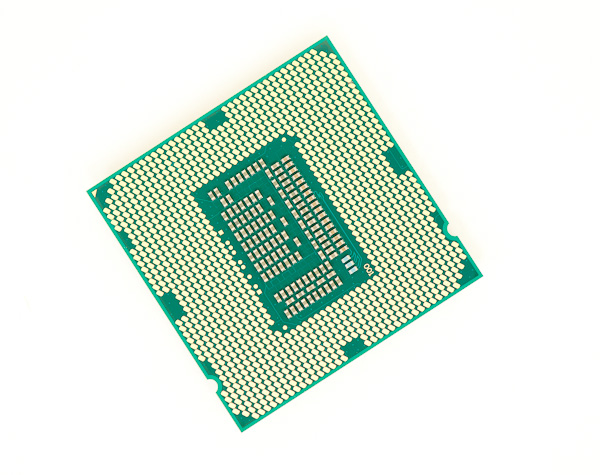
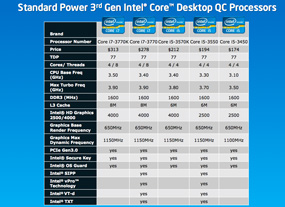
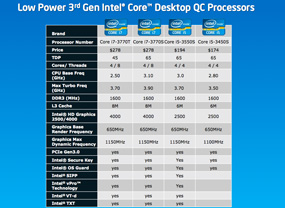
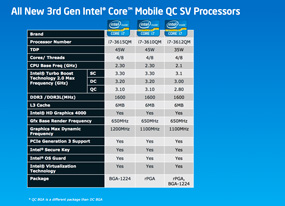
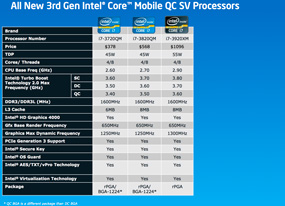








173 Comments
View All Comments
hechacker1 - Monday, April 23, 2012 - link
VT-d is interesting if you run ESXi or a Linux based hyper visor, as they allow to utilize VT-d to directly assign hardware to the virtual machines. I think you can even share hardware with it.In Linux for example you could host Windows and assign it a real GPU and get full performance from it.
A while ago I built a machine with that idea in mind, but the software bits weren't in place just yet.
I too with for an overclockable VT-d part.
terragb - Monday, April 23, 2012 - link
Just to add to this, all the processors do support VT-x which is the potentially performance enhancing spec for virtualization.JimmiG - Monday, April 23, 2012 - link
Really annoying how Intel decides seemingly at random which parts get VT-d and which don't.Why do you get it with the $174 i5 3450, but not with the "one CPU to rule them all", everything-but-the-kitchen-sink, $313 i7 3770K?
It's also a stupid way to segment your product line, since 99% of the people buying systems with these CPUs won't even know what it does.
This means AMD also gets some of my money when I upgrade - I'll just build a cheap Bulldozer system for my virtualization needs. I can't really use my Phenom II X4 for that after upgrading - it uses too much power and it's dependent on DDR-2 RAM, which is hard to find and expensive.
dcollins - Monday, April 23, 2012 - link
VT-d is required to support Intel's Trusted Execution Platform, which is used by many OEMs to provide business management tools. That's why the low end CPUs have support and the enthusiast SKUs do not. VT-d provides no benefit to Desktop users right now because desktop virtualization packages do not support it.I agree that it is frustrating having to sacrifice future-proofing for overclocking, but Intel's logic kind of makes sense. Remember, any features that can be disabled will increase yields which means lower prices (or higher margins).
JimmiG - Tuesday, April 24, 2012 - link
VirtualBox, which is one of the most popular desktop virtualization packages, does support VT-d. In fact it's required for 64-bit guests and guests with more than one CPU being virtualized.Does VT-d really use so many transistors that disabling it increases yields? AMD keep their hardware virtualization features enabled even in their lowest-end CPUs (even those where entire cores have been disabled to increase yields)
dgingeri - Monday, April 23, 2012 - link
"I took the last Harry Potter Blu-ray, stripped it of its DRM and used Media Espresso to make it playable on an iPad 2 (1024 x 768 preset)."I wouldn't admit that in print, if I were you. The DMCA goblins will come and get you.
p05esto - Monday, April 23, 2012 - link
They can say they're just kidding and used it as an example, because they would "never" actually do that. I think pirate cops would need more than talk to go to court. Imagine how bad this site would rip into them if they said anything, lol.XJDHDR - Monday, April 23, 2012 - link
Why? No-one loses money from transcode benchmarks. Besides, piracy is the real problem. If it didn't exist, there would be no DRM to strip away.dgingeri - Monday, April 23, 2012 - link
Sure, nobody loses any money, but the entertainment industry pushed DMCA through, and they will use it if they think they could get any profit out of it. It's one law, out of many, that isn't there to protect anyone. It's there so the MPAA and RIAA can screw people over.copyrightforreal - Monday, April 23, 2012 - link
Don't pretend you know shit about copyright law when you don't.Ripping a DVD you own is NOT illegal under the DMCA or Copyright act.
Wikipedia article that even you will be able to comprehend:
http://en.wikipedia.org/wiki/Ripping#Circumvention...